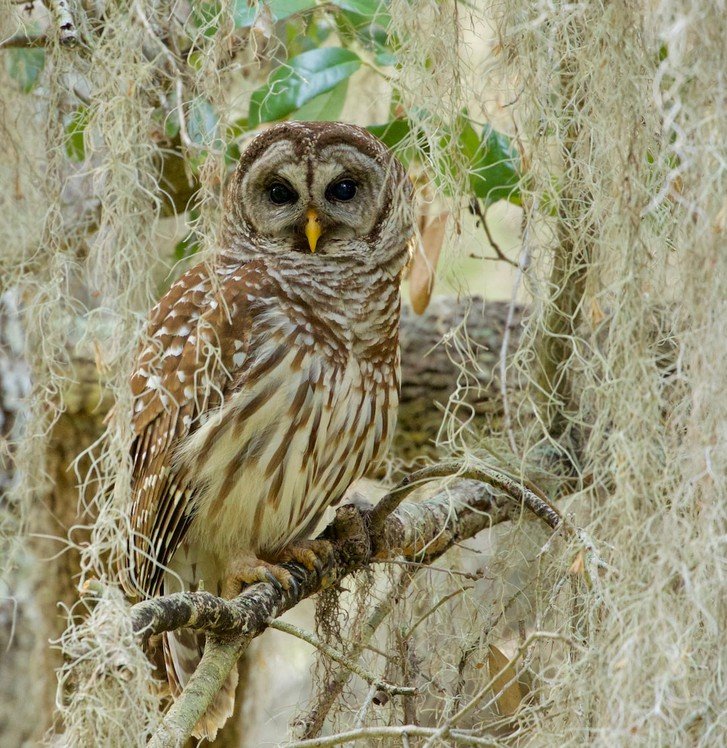Owl Interactions During Migration: Fascinating Connections with Other Species
Category : Owl migration patterns | Sub Category : Interactions with other species during owl migration Posted on 2023-07-07 21:24:53

Owl Interactions During Migration: Fascinating Connections with Other Species
Introduction:
Nature shows its awe-inspiring spectacle of migration as the seasons change. Many species embark on long journeys to find the perfect breeding grounds, food sources, or climate conditions. The owls are known for their enigmatic presence and striking appearances. Did you know that owls interact with other species during their migration?
1 Raptors are on the move.
During owl migration, these wise and elusive birds often find themselves sharing the airspace with other birds. Raptors, like hawks, falcons, and eagles, travel long distances to escape harsh winters. The charismatic birds of prey are often seen along the same migratory routes as owls. Peaceful coexistence and mutual tolerance to competition for resources are some of the things that can be found in such interactions. The paths create a captivating atmosphere as different bird species come together.
2 The birds are seeking a companion.
During migration, owls become a beacon of interest and curiosity for many songbirds. Smaller bird species seek safety in numbers and camaraderie when traveling with owls. The presence of majestic birds makes it easier for the Songbirds to gather around. The owls and songbirds give protection from predators, while the songbirds alert everyone of potential dangers.
3 Bonding over habitats.
During migration, owls congregate in specific sites, forming temporary communities. These sites attract various bird species because of their abundant food supplies and shelter. As owls hunt at night, they provide a source of food for other diurnal species. Night-hunting owls can make it easy to pick up small mammals and insects during the day.
4 The art of mimicry.
Some owl species can mimic the calls of other bird species. owls use mimicry to communicate with other birds, and this unique skill becomes more prevalent during migration. By imitating the calls of other birds, owls can blend into their surroundings, reducing the risk of confrontation or competition. This adaptation shows us how communication systems have evolved among migratory birds.
Conclusion
As owls spread their wings and embark on their extraordinary journeys, they encounter a wide range of interactions with other species. owls demonstrate their resilience and adaptability by sharing airspace with segulls, creating temporary communities in stopover sites, or using mimicry to communicate. The interactions show the interconnectedness of the natural world, where a harmonious balance is struck even amidst the grandeur and challenges of migration. Take a moment to appreciate the hidden connections that unfold high above us in the sky when you hear the hoot of an owl.
Leave a Comment:
SEARCH
Recent News
- Zurich, Switzerland is not only known for its picturesque landscapes and vibrant culture but also for its diverse wildlife. While the city may be more commonly associated with its financial sector and luxury shopping, there are some rare and fascinating animals that call Zurich home.
- YouTube Content Creation: Showcasing Rare Animals through Translation
- If you are a nature enthusiast and love learning about rare and exotic animals, there are several YouTube channels dedicated to showcasing these fascinating creatures in their natural habitats. These channels provide a unique opportunity to educate yourself about lesser-known species and the importance of conservation efforts.
- The Importance of Developing Rare Skills Like a Rare Animal in the Workplace
- Women in Politics: Breaking Barriers and Making History
- Warsaw, the capital city of Poland, is not only known for its rich history and beautiful architecture but also for its unique and diverse wildlife. Despite being a bustling urban center, Warsaw is home to some rare and fascinating animals that can be found in various parks, forests, and reserves in and around the city.
- Vietnam is a country known for its rich culture, beautiful landscapes, and delicious cuisine. However, it is also home to a variety of rare and endangered animals that are found nowhere else in the world. In recent years, some Vietnamese businesses and companies have taken initiatives to help protect these precious species and their habitats.
- Vienna, the capital city of Austria, is known for its rich history, stunning architecture, and vibrant cultural scene. But did you know that Vienna is also home to a variety of rare and interesting animals? From exotic species at the Vienna Zoo to elusive wildlife in the surrounding countryside, there are plenty of fascinating creatures to discover in and around this beautiful city.
READ MORE
2 months ago Category : owlo

Zurich, Switzerland is not only known for its picturesque landscapes and vibrant culture but also for its diverse wildlife. While the city may be more commonly associated with its financial sector and luxury shopping, there are some rare and fascinating animals that call Zurich home.
Read More →2 months ago Category : owlo

YouTube Content Creation: Showcasing Rare Animals through Translation
Read More →2 months ago Category : owlo

If you are a nature enthusiast and love learning about rare and exotic animals, there are several YouTube channels dedicated to showcasing these fascinating creatures in their natural habitats. These channels provide a unique opportunity to educate yourself about lesser-known species and the importance of conservation efforts.
Read More →2 months ago Category : owlo
